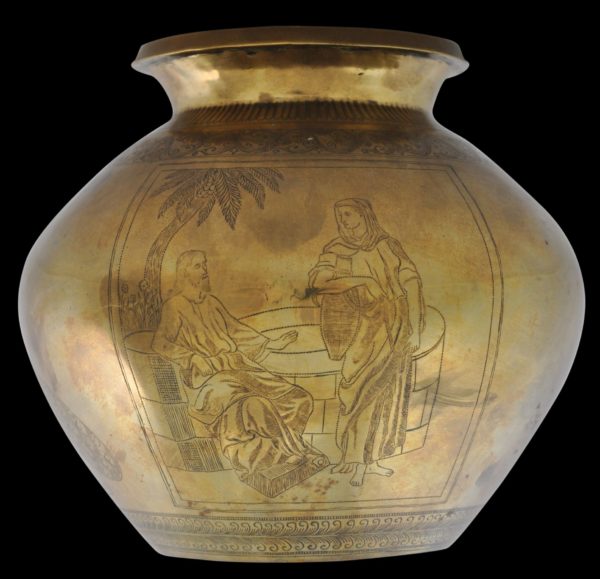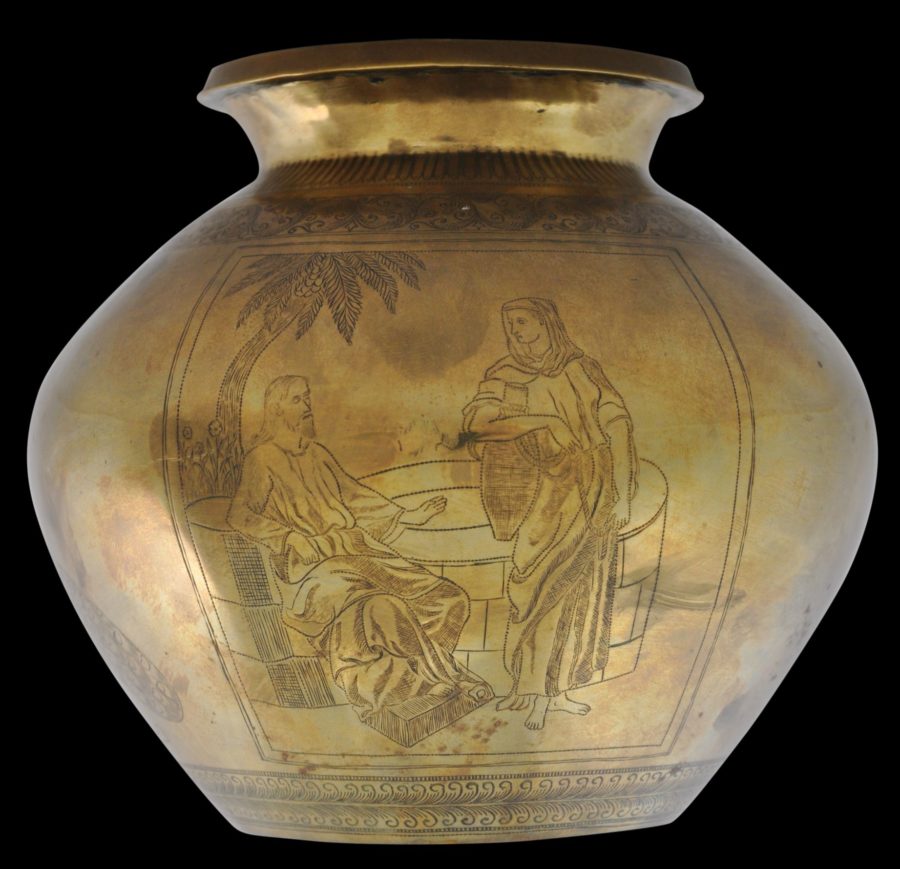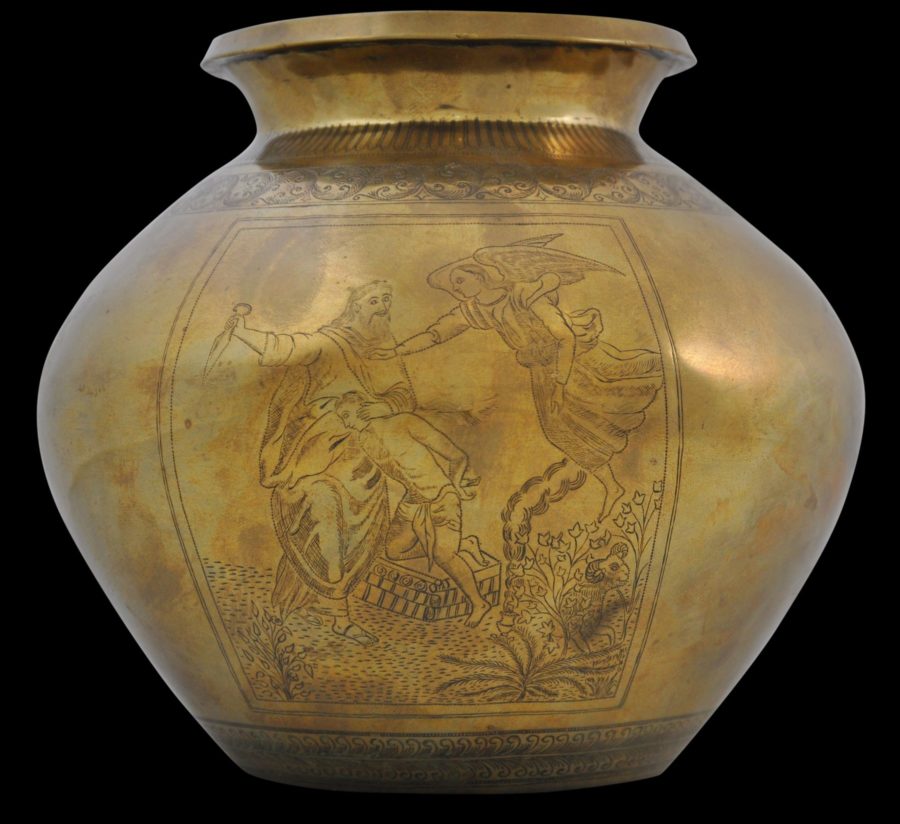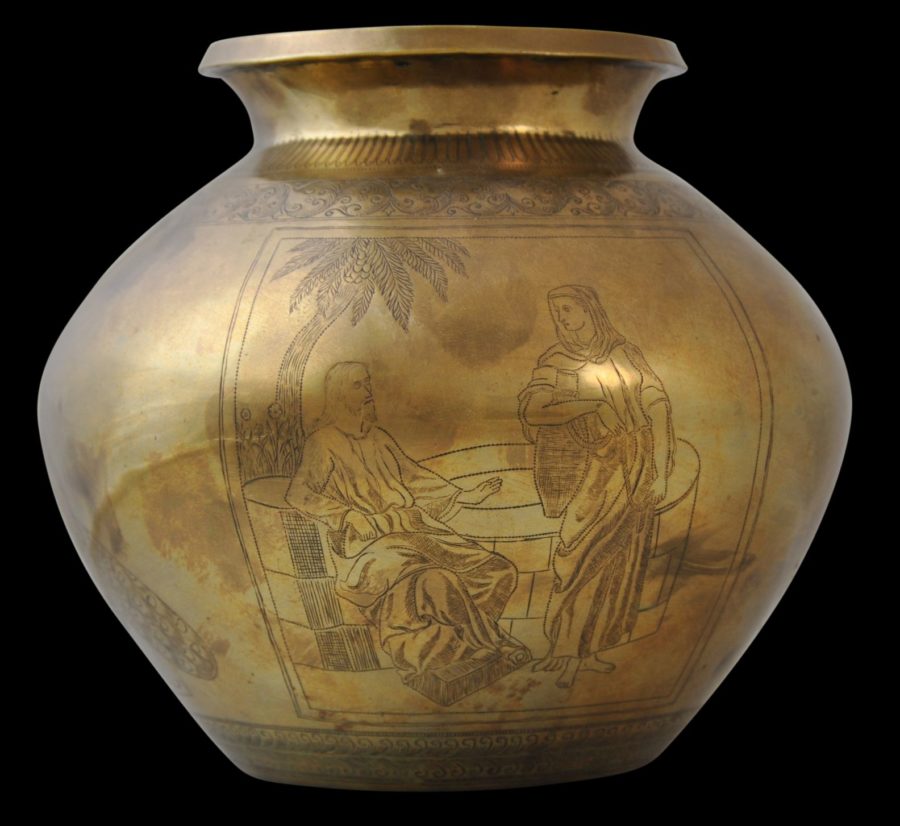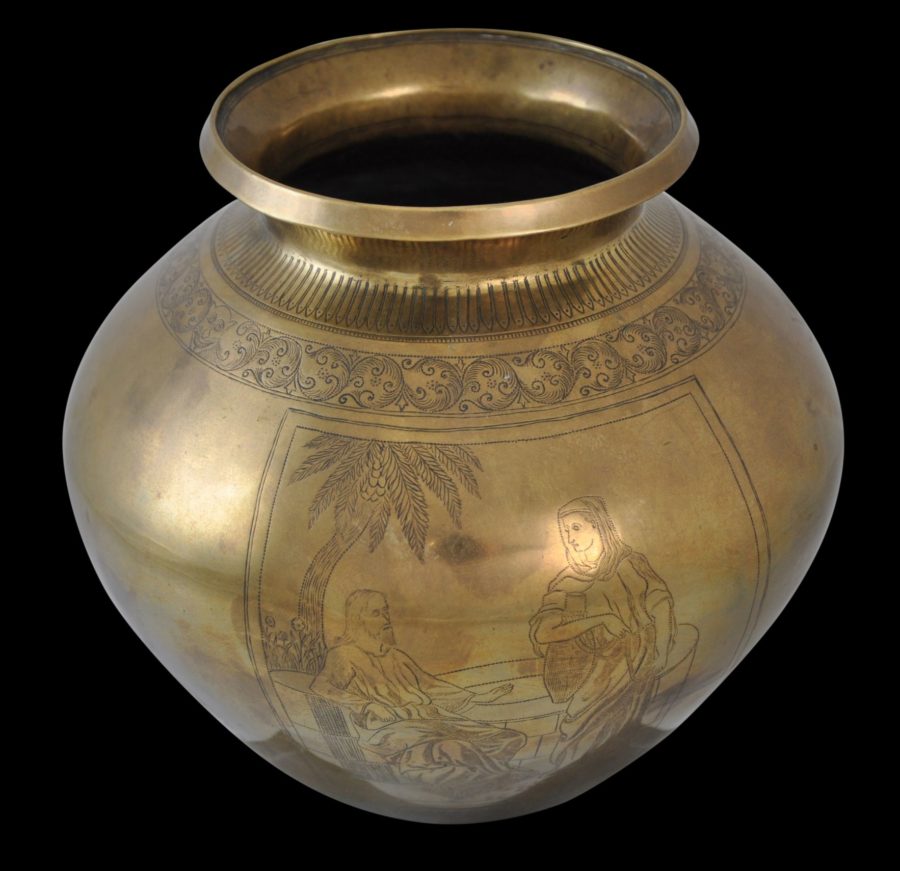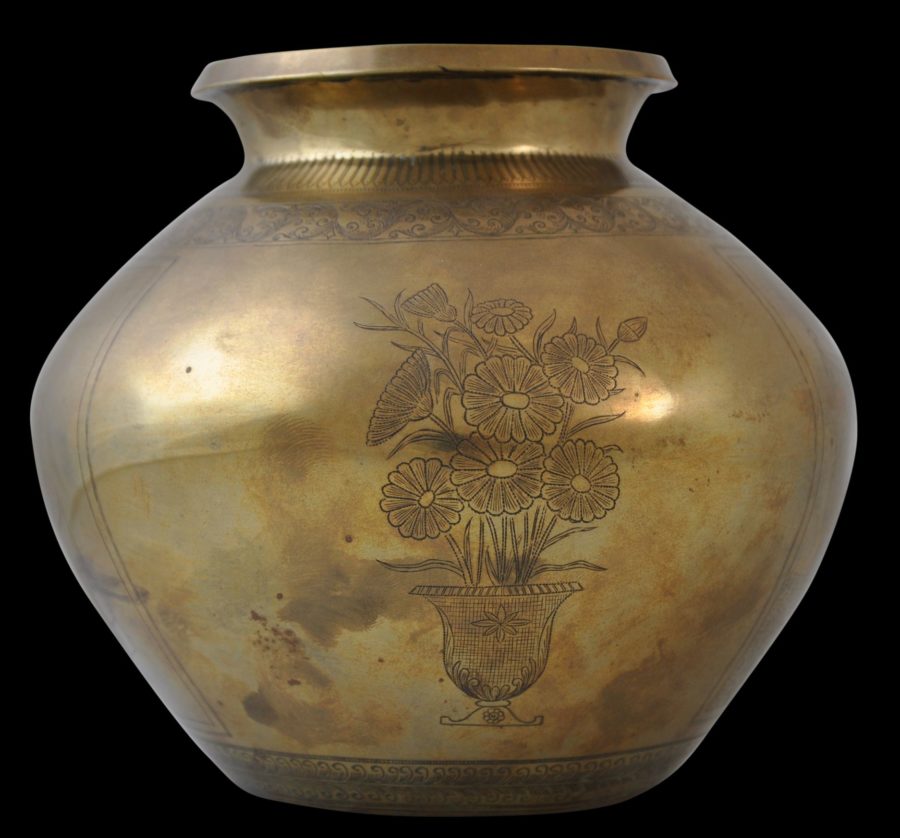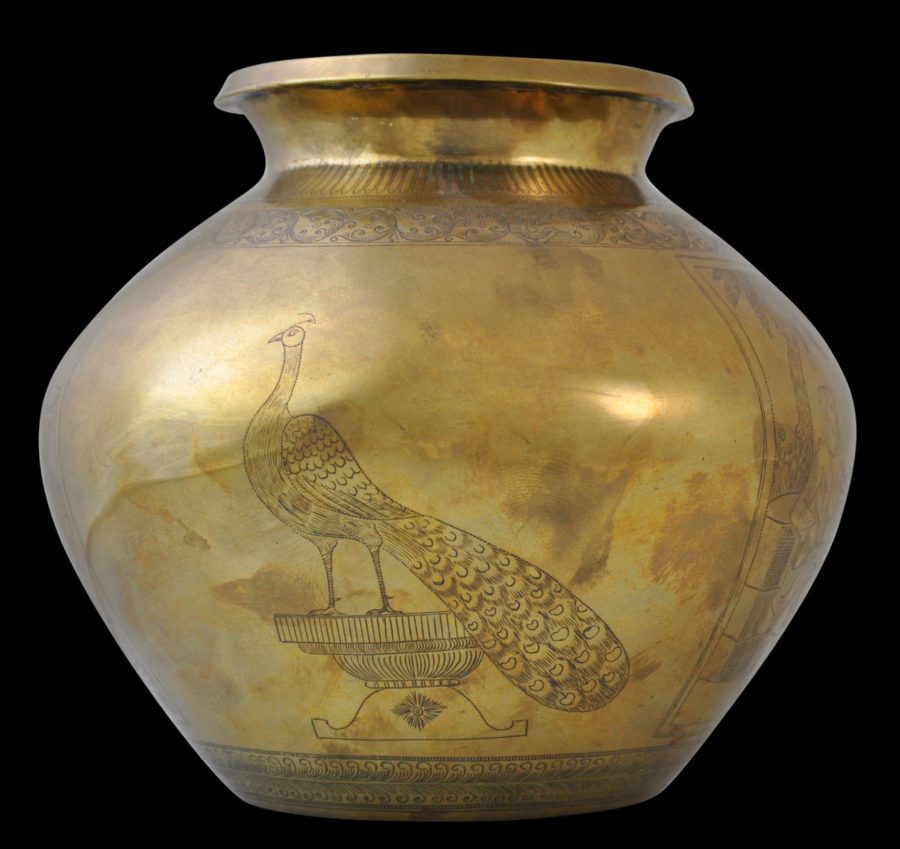This well-proportioned, small water vase or lota has a flattened, spherical form, sits on a flattened base, and has a narrowed neck and a wide mouth with a reinforced rim.
It is of brass and has been engraved with two Biblical scenes as well as an Indian male peacock at rest on a baluster-form stand, and a vase of flowers.
It is a remarkable vessel – the form is typically Hindu and used for Hindu ritual purposes, but it is engraved with Christian scenes. These appear to be based on engravings.
One shows the near sacrifice of Isaac. Genesis 22 in the Hebrew Bible, describes how God commands Abraham to offer his son Isaac as a sacrifice. After Isaac is bound to an altar, a messenger from God (in the scene here, an angel) stops Abraham before the sacrifice can be completed, and proclaims ‘now I know you fear God.’ Abraham looks up and sees a ram and sacrifices instead and Isaac is thus spared. The ram too is shown in the scene on the lota.
The other scene is from the Gospel of John in the New testament and shows Jesus seated at Jacob’s well in conversation with the Samaritan woman. She is shown on the lota holding a large amphora into which she intends to pour the drawn water.
When it comes to Hindu ritual, such a vessel was made to store lustral holy water, perhaps from the Ganges. So it seems fitting that the Christian scenes shown relate to sacrifice and water.
But why should an otherwise Hindu lota be engraved with Christian scenes? Perhaps it is suggestive of cross-cultural and religious influence. With trade and colonisation came Christianity to India and there are many Indian Christians today, particularly in South India. So perhaps it is a local Christian adaption of a Hindu vessel. Another possibility is that it is and remained a Hindu vessel but incorporated Christian imagery because some Hindus simply see Jesus as another manifestation or avatar of god. In this way, Jesus can comfortably sit in the Hindu pantheon of deities. Either way, this is a fascinating and rare item.
The vessel here is in excellent condition. There are minor blemishes that can be removed with polishing but we have elected to keep it in the state in which it came to us.
References
Zebrowski, M., Gold, Silver & Bronze from Mughal India, Alexandria Press, 1997.


